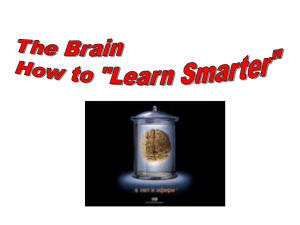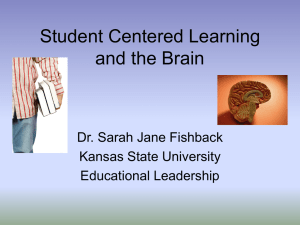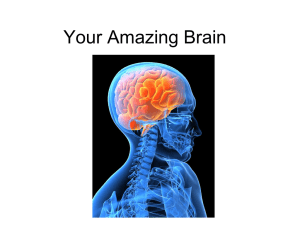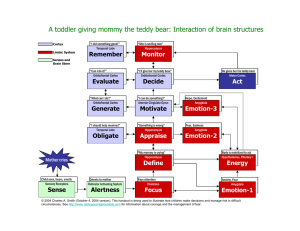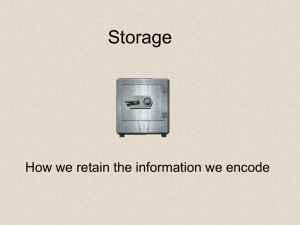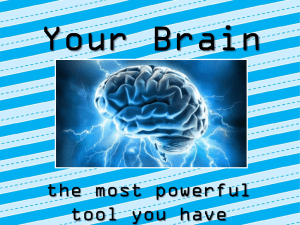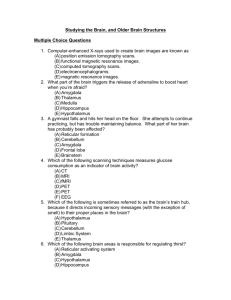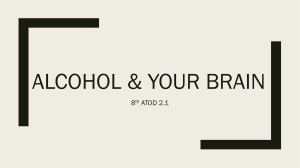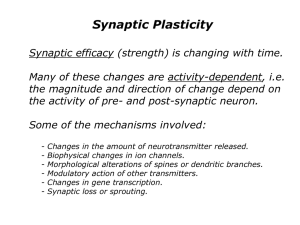AP Psychology: Neuroscience Summer Assignment
advertisement
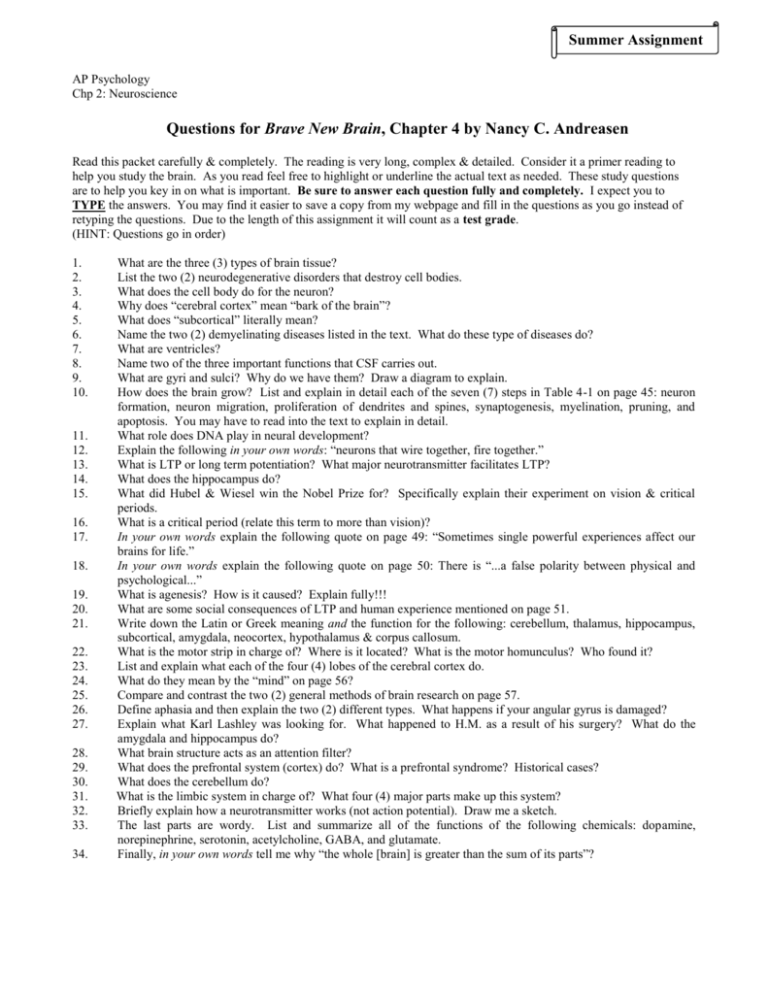
Summer Assignment AP Psychology Chp 2: Neuroscience Questions for Brave New Brain, Chapter 4 by Nancy C. Andreasen Read this packet carefully & completely. The reading is very long, complex & detailed. Consider it a primer reading to help you study the brain. As you read feel free to highlight or underline the actual text as needed. These study questions are to help you key in on what is important. Be sure to answer each question fully and completely. I expect you to TYPE the answers. You may find it easier to save a copy from my webpage and fill in the questions as you go instead of retyping the questions. Due to the length of this assignment it will count as a test grade. (HINT: Questions go in order) 1. 2. 3. 4. 5. 6. 7. 8. 9. 10. 11. 12. 13. 14. 15. 16. 17. 18. 19. 20. 21. 22. 23. 24. 25. 26. 27. 28. 29. 30. 31. 32. 33. 34. What are the three (3) types of brain tissue? List the two (2) neurodegenerative disorders that destroy cell bodies. What does the cell body do for the neuron? Why does “cerebral cortex” mean “bark of the brain”? What does “subcortical” literally mean? Name the two (2) demyelinating diseases listed in the text. What do these type of diseases do? What are ventricles? Name two of the three important functions that CSF carries out. What are gyri and sulci? Why do we have them? Draw a diagram to explain. How does the brain grow? List and explain in detail each of the seven (7) steps in Table 4-1 on page 45: neuron formation, neuron migration, proliferation of dendrites and spines, synaptogenesis, myelination, pruning, and apoptosis. You may have to read into the text to explain in detail. What role does DNA play in neural development? Explain the following in your own words: “neurons that wire together, fire together.” What is LTP or long term potentiation? What major neurotransmitter facilitates LTP? What does the hippocampus do? What did Hubel & Wiesel win the Nobel Prize for? Specifically explain their experiment on vision & critical periods. What is a critical period (relate this term to more than vision)? In your own words explain the following quote on page 49: “Sometimes single powerful experiences affect our brains for life.” In your own words explain the following quote on page 50: There is “...a false polarity between physical and psychological...” What is agenesis? How is it caused? Explain fully!!! What are some social consequences of LTP and human experience mentioned on page 51. Write down the Latin or Greek meaning and the function for the following: cerebellum, thalamus, hippocampus, subcortical, amygdala, neocortex, hypothalamus & corpus callosum. What is the motor strip in charge of? Where is it located? What is the motor homunculus? Who found it? List and explain what each of the four (4) lobes of the cerebral cortex do. What do they mean by the “mind” on page 56? Compare and contrast the two (2) general methods of brain research on page 57. Define aphasia and then explain the two (2) different types. What happens if your angular gyrus is damaged? Explain what Karl Lashley was looking for. What happened to H.M. as a result of his surgery? What do the amygdala and hippocampus do? What brain structure acts as an attention filter? What does the prefrontal system (cortex) do? What is a prefrontal syndrome? Historical cases? What does the cerebellum do? What is the limbic system in charge of? What four (4) major parts make up this system? Briefly explain how a neurotransmitter works (not action potential). Draw me a sketch. The last parts are wordy. List and summarize all of the functions of the following chemicals: dopamine, norepinephrine, serotonin, acetylcholine, GABA, and glutamate. Finally, in your own words tell me why “the whole [brain] is greater than the sum of its parts”?
